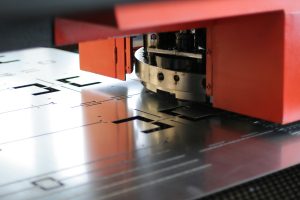The Advantages and Disadvantages of Precision Metal Stamping: Palmer Engineering’s Approach
Jun 01, 2022 Precision metal stamping is a process that uses machines to shape flat metal into a variety of defect-free components. Metal stamping allows manufacturers to create a high volume of parts in a short amount of time, making it an efficient method for various industries that need to control costs. Palmer Engineering has been using precision metal stamping to produce parts for the automotive, commercial, and defense industries since 1948. It has become a major provider for tier-one suppliers in the automotive sector. Let’s take a look at how precision metal stamping works and how Palmer Engineering leverages its benefits.
Precision metal stamping is a process that uses machines to shape flat metal into a variety of defect-free components. Metal stamping allows manufacturers to create a high volume of parts in a short amount of time, making it an efficient method for various industries that need to control costs. Palmer Engineering has been using precision metal stamping to produce parts for the automotive, commercial, and defense industries since 1948. It has become a major provider for tier-one suppliers in the automotive sector. Let’s take a look at how precision metal stamping works and how Palmer Engineering leverages its benefits.
What Is Precision Metal Stamping?
Precision metal stamping entails putting high-quality flat sheet metal into a stamping press. Then, a tool and die surface molds the metal into the required shape for the component. There are multiple techniques that can produce the desired part, including blanking, bending, embossing, flanging, and coining. The professionals at Palmer Engineering offer:
- Progressive stamping and blanking
- In-die tapping and nut insertion
- Stamping of difficult configurations
- Secondary resistance and MIG welding, tapping, and other assembly operations
Palmer Engineering’s coil-fed press equipment has sizes up to 96-inch, 400-ton beds with single-stroke presses. Additionally, error-proofing and die sensors have significantly reduced both the direct and indirect costs of operations for its customer base while enabling tight tolerances and the production of defect-free products.
Advantages of Metal Stamping
Metal stamping offers a high level of automation. This makes it a perfect option for high-volume, long production runs since labor costs are reduced as production goes up.
Metal stamping also has lower secondary costs and lower die costs. The dies used in metal stamping have lower maintenance costs than other methods, and the tooling used in this process has a long lifespan. Cleaning, plating, and other secondary expenses that follow the stamping processes are also more affordable compared to other component production methods.
Stamping machines can also utilize advanced technology such as CAD/CAM design and programming for enhanced precision and quicker production times.
Disadvantages of Metal Stamping
While precision metal stamping has numerous benefits for high-volume production runs, it’s not as beneficial for smaller projects. While it can offer quick turnaround times, the upfront cost can be prohibitive for limited production runs and may not be a good solution when weighing labor and design costs. Additionally, once the tools have been created, it can be difficult to make any changes to the design after the fact. However, it is still an excellent match for long-term production.
Investing in Our Manufacturers
Demmer Manufacturing helps our portfolio companies grow by investing in their infrastructure, technology, and people. Palmer Engineering has received awards and honors from tier-one automotive suppliers and OEMs for the quality parts they deliver with accuracy and precision. We are proud to support their continued growth. You can click here to read more about Palmer Engineering and its approach to precision metal stamping.

